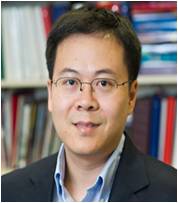报告题目:Plastics or Wood ?
报告人: 黄嘉兴 教 授
邀请人: 霍峰蔚 教 授
报告时间:11月23日(周五)15:00
报告地点:科技创新大楼C501室
Abstract
Curious observations can often inspirepeople
to come up with new hypotheses and define new problems in research. I will ask a
few such questions to stimulate discussions about materials we see and use in
daily life. For example, disposal utensils are used in massive quantities,
especially in China. However, materials selection for different types of
disposable utensils has been quite intriguing. For example, disposable
chopsticks are most commonly made of wood and bamboo, while disposable spoons,
forks and knives are nearly always made of plastics. I would like to hear your
thoughts about why such material selections are determined, and whether they
should be and can be changed.
Biography

Jiaxing Huang is a Professor of Materials Science
and Engineering at Northwestern University. He received his B.S. degree in
Chemical Physics from USTC, Ph.D. in Chemistry from UCLA, and became a Miller
Fellow at UC Berkeley before joining Northwestern in 2007. In research, his
group uses chemical principles and tools to discover new materials, advance
materials processing, and make materials innovations for better living. Some
recent examples include carbon based nanomaterials, clay minerals, and novel
colloidal particles for energy storage, water treatments and even safer cosmetics.
Through teaching, they aim todevelop intuition, inspire creativity and bring
the best out of students and themselves. His work has been recognized by awards
from the National Science Foundation, the Sloan Foundation, the Society of
Manufacturing Engineers, the American Vacuum Society, and the International
Aerosol Research Assembly. He is included in the lists of Highly Cited Researchers
(Thompson Reuters/Clarivate Analytics) and Most Cited Researchers in Materials
Science and Engineering (Elsevier). He isalsoa recipient of theGuggenheim
Fellowship, the JSPS Fellowship from Japan and the Humboldt Research Award from
Germany.
